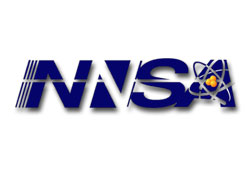
A supercomputer is a computer with a high level of performance as compared to a general-purpose computer. The performance of a supercomputer is commonly measured in floating-point operations per second (FLOPS) instead of million instructions per second (MIPS). Since 2017, there are supercomputers which can perform over 1017 FLOPS (a hundred quadrillion FLOPS, 100 petaFLOPS or 100 PFLOPS). Since November 2017, all of the world's fastest 500 supercomputers run Linux-based operating systems. Additional research is being conducted in the United States, the European Union, Taiwan, Japan, and China to build faster, more powerful and technologically superior exascale supercomputers.

In computing, floating point operations per second is a measure of computer performance, useful in fields of scientific computations that require floating-point calculations. For such cases it is a more accurate measure than measuring instructions per second.

Blue Gene is an IBM project aimed at designing supercomputers that can reach operating speeds in the petaFLOPS (PFLOPS) range, with low power consumption.

ASCI White was a supercomputer at the Lawrence Livermore National Laboratory in California, which was briefly the fastest supercomputer in the world.

The IBM 7030, also known as Stretch, was IBM's first transistorized supercomputer. It was the fastest computer in the world from 1961 until the first CDC 6600 became operational in 1964.

ASCI Red was the first computer built under the Accelerated Strategic Computing Initiative (ASCI), the supercomputing initiative of the United States government created to help the maintenance of the United States nuclear arsenal after the 1992 moratorium on nuclear testing.
ASCI Blue Pacific was a supercomputer installed at the Lawrence Livermore National Laboratory (LLNL) in Livermore, CA at the end of 1998. It was a collaboration between IBM and LLNL.

ASCI Blue Mountain is a supercomputer installed at the Los Alamos National Laboratory in Los Alamos, New Mexico. It was designed to run simulations for the United States National Nuclear Security Administration's Advanced Simulation and Computing program. The computer was a collaboration between Silicon Graphics Corporation and Los Alamos National Laboratory. It was installed in 1998.

MareNostrum is the main supercomputer in the Barcelona Supercomputing Center. It is the most powerful supercomputer in Spain, one of thirteen supercomputers in the Spanish Supercomputing Network and one of the seven supercomputers of the European infrastructure PRACE.

The Advanced Simulation and Computing Program is a super-computing program run by the National Nuclear Security Administration, in order to simulate, test, and maintain the United States nuclear stockpile. The program was created in 1995 in order to support the Stockpile Stewardship Program. The goal of the initiative is to extend the lifetime of the current aging stockpile.
Scalable POWERparallel (SP) is a series of supercomputers from IBM. SP systems were part of the IBM RISC System/6000 (RS/6000) family, and were also called the RS/6000 SP. The first model, the SP1, was introduced in February 1993, and new models were introduced throughout the 1990s until the RS/6000 was succeeded by eServer pSeries in October 2000. The SP is a distributed memory system, consisting of multiple RS/6000-based nodes interconnected by an IBM-proprietary switch called the High Performance Switch (HPS). The nodes are clustered using software called PSSP, which is mainly written in Perl.

The National Energy Research Scientific Computing Center, or NERSC, is a high performance computing (supercomputer) user facility operated by Lawrence Berkeley National Laboratory for the United States Department of Energy Office of Science. As the mission computing center for the Office of Science, NERSC houses high performance computing and data systems used by 7,000 scientists at national laboratories and universities around the country. NERSC's newest and largest supercomputer is Cori, which was ranked 5th on the TOP500 list of world's fastest supercomputers in November 2016. NERSC is located on the main Berkeley Lab campus in Berkeley, California.

The TOP500 project ranks and details the 500 most powerful non-distributed computer systems in the world. The project was started in 1993 and publishes an updated list of the supercomputers twice a year. The first of these updates always coincides with the International Supercomputing Conference in June, and the second is presented at the ACM/IEEE Supercomputing Conference in November. The project aims to provide a reliable basis for tracking and detecting trends in high-performance computing and bases rankings on HPL, a portable implementation of the high-performance LINPACK benchmark written in Fortran for distributed-memory computers.
High Performance Storage System (HPSS) is a flexible, scalable, policy-based Hierarchical Storage Management product developed by the HPSS Collaboration. It provides scalable hierarchical storage management (HSM), archive, and file system services using cluster, LAN and SAN technologies to aggregate the capacity and performance of many computers, disks, disk systems, tape drives and tape libraries.

IBM Sequoia is retired a petascale Blue Gene/Q supercomputer constructed by IBM for the National Nuclear Security Administration as part of the Advanced Simulation and Computing Program (ASC). It was delivered to the Lawrence Livermore National Laboratory (LLNL) in 2011 and was fully deployed in June 2012.

The main credit to supercomputers goes to the inventor of CDC -6600, Seymour Cray. The history of supercomputing goes back to the early 1920s in the United States with the IBM tabulators at Columbia University and a series of computers at Control Data Corporation (CDC), designed by Seymour Cray to use innovative designs and parallelism to achieve superior computational peak performance. The CDC 6600, released in 1964, is generally considered the first supercomputer. However, some earlier computers were considered supercomputers for their day, such as the 1954 IBM NORC, the 1960 UNIVAC LARC, and the IBM 7030 Stretch and the Atlas, both in 1962.
IBM has a series of high performance microprocessors called POWER followed by a number designating generation, i.e. POWER1, POWER2, POWER3 and so forth up to the latest POWER9. These processors have been used by IBM in their RS/6000, AS/400, pSeries, iSeries, System p, System i and Power Systems line of servers and supercomputers. They have also been used in data storage devices by IBM and by other server manufacturers like Bull and Hitachi.

Summit or OLCF-4 is a supercomputer developed by IBM for use at Oak Ridge National Laboratory, capable of 200 petaFLOPS, making it the fastest supercomputer in the world from November 2018 to June 2020. Its current LINPACK benchmark is clocked at 148.6 petaFLOPS. As of November 2019, the supercomputer is also the 5th most energy efficient in the world with a measured power efficiency of 14.668 gigaFLOPS/watt. Summit is the first supercomputer to reach exaflop speed, achieving 1.88 exaflops during a genomic analysis and is expected to reach 3.3 exaflops using mixed-precision calculations.

Sierra or ATS-2 is a supercomputer built for the Lawrence Livermore National Laboratory for use by the National Nuclear Security Administration as the second Advanced Technology System. It is primarily used for predictive applications in stockpile stewardship, helping to assure the safety, reliability and effectiveness of the United States' nuclear weapons.














